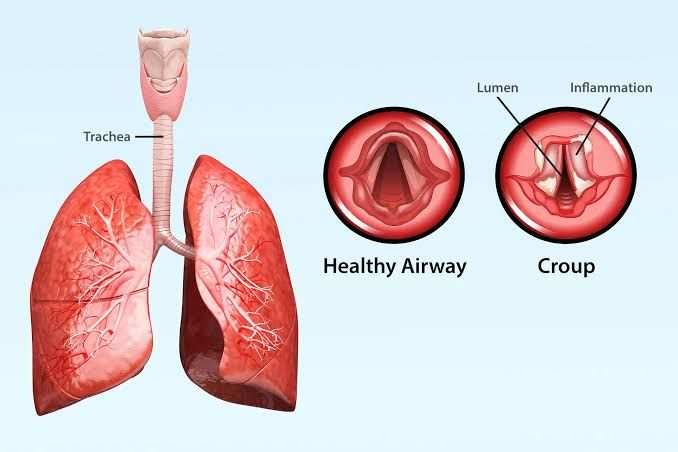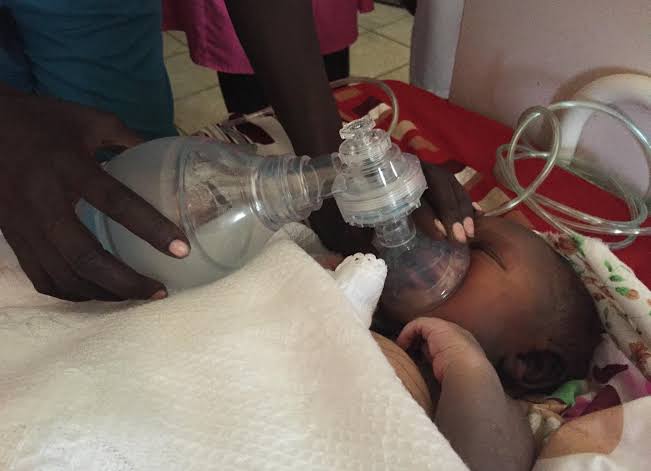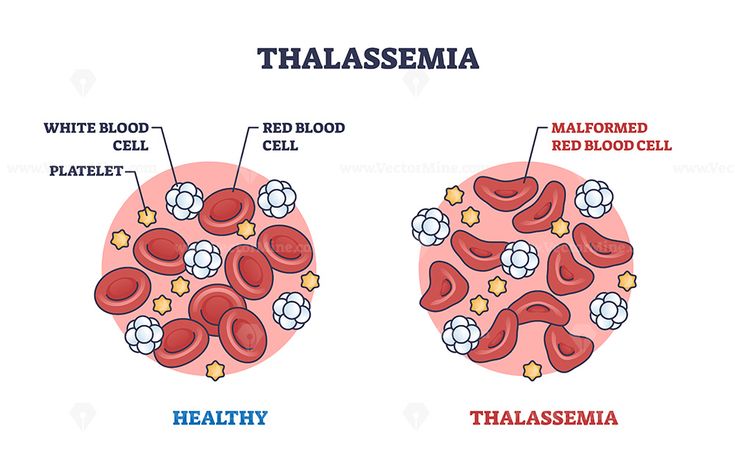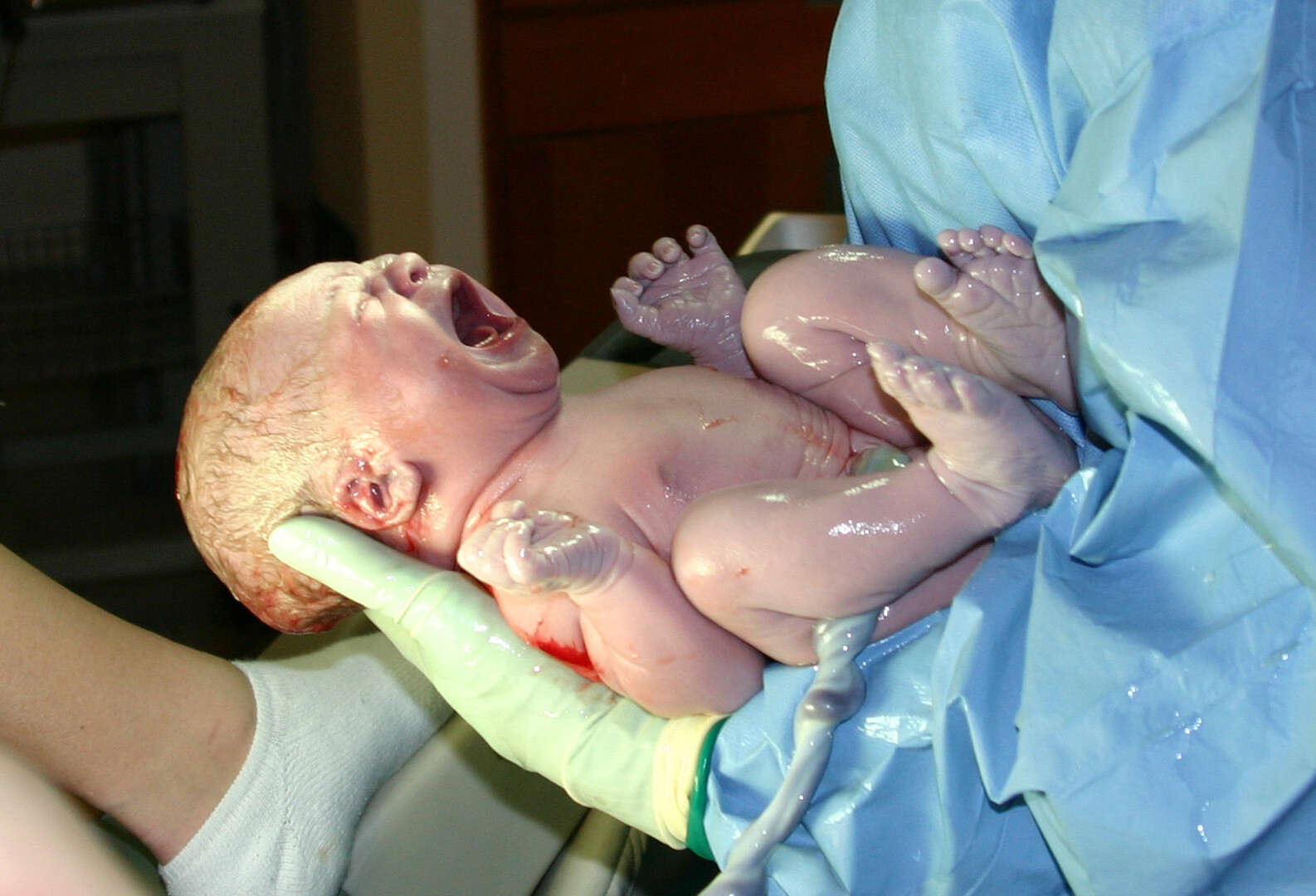
Croup, clinically known as Laryngotracheobronchitis, is a common acute upper airway obstruction syndrome predominantly affecting infants and young children. Characterized by inflammation and edema of the larynx, trachea, and bronchi, it typically results from viral infections, with parainfluenza viruses being the most frequent culprits, followed by respiratory syncytial virus (RSV), adenovirus, and influenza virus. While usually a self-limiting illness, Croup can sometimes lead to significant respiratory distress requiring urgent medical intervention. Understanding its clinical manifestations, the necessary diagnostic evaluation, and a structured management approach is paramount for healthcare professionals to ensure optimal patient outcomes.
1. Clinical Presentation of Croup
The clinical presentation of Croup is often distinctive, allowing for a high index of suspicion based on history and physical examination. The condition primarily affects children between 6 months and 3 years of age, though it can occur in infants as young as 3 months and extend into early school age.
1.1 Prodromal Symptoms: Croup frequently begins with non-specific upper respiratory infection (URI) symptoms for 12 to 48 hours, similar to a common cold. These include:
- Rhinorrhea (runny nose)
- Nasal congestion
- Mild cough
- Low-grade fever (though fever can sometimes be high)
- Sore throat
1.2 Hallmark Symptoms: Following the prodromal phase, the characteristic symptoms of Croup emerge, often worsening at night:
- Barking (“seal-like”) cough: This is the most pathognomonic symptom, resulting from inflammation and narrowing of the subglottic region.
- Inspiratory stridor: A high-pitched, harsh sound heard during inspiration, indicating significant upper airway obstruction. In mild cases, stridor may only be present with agitation or crying; in moderate to severe cases, it is present at rest.
- Hoarseness: Due to laryngeal involvement and vocal cord edema.
- Dyspnea: Difficulty breathing, which can range from mild to severe.
1.3 Associated Signs of Respiratory Distress: As the airway obstruction worsens, children may exhibit escalating signs of respiratory distress:
- Retractions: Indrawing of the suprasternal, supraclavicular, intercostal, or subcostal spaces during inspiration.
- Nasal flaring: Widening of the nostrils with each breath.
- Tachypnea: Increased respiratory rate.
- Tachycardia: Increased heart rate, often in response to increased respiratory effort and hypoxemia.
- Pallor or Cyanosis: In severe cases, indicating significant hypoxemia.
- Altered mental status: Restlessness, irritability, lethargy, or decreased level of consciousness can signify severe hypoxemia or hypercapnia, representing a critical sign.
1.4 Severity Assessment: The severity of Croup is critical for guiding management. The Westley Croup Score is a widely used clinical tool that assesses five parameters: level of consciousness, cyanosis, stridor, air entry, and retractions. Each parameter is assigned a score, and the total score categorizes Croup into:
- Mild Croup (Score 0-2): Occasional barking cough, no stridor at rest, no or mild retractions.
- Moderate Croup (Score 3-7): Frequent barking cough, easily audible stridor at rest, mild to moderate retractions, no or little distress/agitation.
- Severe Croup (Score ≥8): Prominent stridor at rest, significant retractions, marked distress/agitation, lethargy, pallor, or cyanosis.
- Impending Respiratory Failure (Score ≥12): Diminished level of consciousness, increasing pallor, poor air entry despite severe retractions, and potential for respiratory arrest. This score category is sometimes implicitly included within severe croup or is treated as a separate, more urgent category.
It’s crucial to differentiate Croup from other causes of acute stridor, such as epiglottitis, bacterial tracheitis, foreign body aspiration, and peritonsillar or retropharyngeal abscess, which often present with more acute onset, higher fever, drooling, dysphagia, or absence of the characteristic barking cough.
2. Diagnostic Workup for Croup
The diagnosis of Croup is primarily a clinical one, based on the characteristic presentation of a barking cough, inspiratory stridor, and hoarseness, typically preceded by URI symptoms. A thorough history and physical examination are usually sufficient, and extensive diagnostic workup is often unnecessary and can even cause undue agitation, which may worsen airway obstruction.
2.1 History: The initial assessment should include:
- Onset and progression of symptoms: When did the cough, stridor, and hoarseness begin? Are they worsening?
- Associated symptoms: Fever, rhinorrhea, difficulty feeding/drinking.
- Past medical history: Previous episodes of Croup, history of allergic reactions, asthma, or other respiratory conditions.
- Immunization status: Particularly important to rule out epiglottitis (though rare due to Hib vaccine).
- Exposure history: Recent contact with sick individuals.
2.2 Physical Examination: A calm, systematic physical examination is essential, focusing on the respiratory system and overall general appearance:
- Observation: Assess the child’s level of consciousness, color (pallor, cyanosis), and signs of respiratory distress (stridor at rest, nasal flaring, retractions).
- Auscultation: Listen to lung sounds for air entry, presence of wheezing, or crackles. The barking cough is usually readily apparent.
- Vital Signs: Obtain heart rate, respiratory rate, temperature, and oxygen saturation (SpO2). Pulse oximetry is crucial for assessing oxygenation.
- Airway inspection: While direct visualization of the pharynx and larynx can be helpful, it should be done cautiously, as it can precipitate laryngospasm and worsen obstruction. It is generally avoided in children with severe distress unless there is a strong suspicion of epiglottitis or foreign body.
2.3 Imaging Studies (Generally Not Required): Radiographic imaging is typically not indicated for the routine diagnosis of Croup, as it rarely changes management and exposes the child to radiation. However, in atypical presentations, diagnostic uncertainty, or to rule out alternative diagnoses, imaging may be considered:
- Anteroposterior (AP) neck X-ray: May show the classic “steeple sign” or “pencil sign,” which is a subglottic narrowing caused by edema, giving the trachea the appearance of a steeple. While suggestive, this sign is neither consistently present nor pathognomonic, and its absence does not rule out Croup.
- Lateral neck X-ray: May be considered if foreign body aspiration or epiglottitis is suspected, though it’s important to weigh the risks of moving a distressed child for imaging. In epiglottitis, a “thumb sign” (swollen epiglottis) may be seen.
2.4 Laboratory Tests (Rarely Indicated): Like imaging, laboratory tests are generally not helpful in the routine management of Croup.
- Viral panel: Nasopharyngeal swabs for viral identification (e.g., PCR for parainfluenza, RSV) are usually not necessary for acute management as treatment is supportive and not virus-specific. They may be considered for epidemiological tracking or in hospitalized patients for infection control purposes.
- Blood tests (CBC, inflammatory markers): Rarely indicated unless there is concern for bacterial superinfection (e.g., bacterial tracheitis, which presents with higher fever, toxicity, and lack of response to Croup treatment) or other systemic illness.
2.5 Differential Diagnosis: It is critical to consider and rule out other conditions that cause acute upper airway obstruction:
- Acute Epiglottitis: Rare due to Hib vaccine, but presents with acute onset, high fever, dysphagia, drooling, muffled voice, and tripod positioning (not barking cough or hoarseness).
- Bacterial Tracheitis: High fever, toxic appearance, thick purulent secretions, poor response to Croup therapies.
- Foreign Body Aspiration: Sudden onset of choking, coughing, stridor, sometimes unilateral wheezing; often no prodrome.
- Peritonsillar or Retropharyngeal Abscess: High fever, sore throat, muffled voice, dysphagia, neck stiffness.
- Angioedema: Rapid onset, often with urticaria, facial swelling, or exposure to allergens.
- Spasmodic Croup: Recurrent episodes of abrupt onset stridor and barking cough, often at night, without preceding URI symptoms or fever; thought to be allergic or hyperreactive airway in nature.
- Anatomical abnormalities: Laryngomalacia, subglottic stenosis (usually chronic stridor).
In summary, the diagnostic workup for Croup emphasizes a thorough clinical assessment, prioritizing patient comfort and minimizing agitation. Ancillary tests are reserved for atypical presentations or when alternative diagnoses are strongly considered.
3. Management of an Infant and Child with Croup
The management of Croup is primarily supportive and centers on reducing airway inflammation and relieving obstruction. Treatment strategies are guided by the severity of the illness, as assessed clinically (e.g., using the Westley Croup Score). The goals are to maintain a patent airway, ensure adequate oxygenation, and alleviate respiratory distress.
3.1 General Principles of Management:
- Minimize Agitation: Crying and agitation can significantly worsen airway obstruction. Keep the child calm, perhaps by allowing parents to hold or comfort them. Procedures should be performed quickly and efficiently.
- Airway Assessment: Continuous monitoring of respiratory effort, stridor, heart rate, and oxygen saturation is crucial.
- Hydration: Oral fluids are preferred if the child can swallow without distress. IV fluids may be necessary for children with severe respiratory distress who cannot safely drink.
- Fever Management: Antipyretics (acetaminophen or ibuprofen) can improve comfort and reduce metabolic demands.
3.2 Severity-Based Management Steps:
3.2.1 Mild Croup (Westley Score 0-2): Children with mild Croup can usually be managed at home with close parental observation and specific instructions.
- Humidified Air: While evidence for its efficacy is limited, cool mist (from a humidifier or steamy bathroom) is often recommended as it may provide comfort by moistening secretions.
- Comfort Measures: Keep the child calm and upright. Ensure adequate fluid intake.
- Parental Education: Instruct parents on recognizing signs of worsening respiratory distress (increased stridor at rest, retractions, difficulty breathing, lethargy) and when to seek immediate medical attention.
- Oral Dexamethasone: A single dose of oral dexamethasone (0.15-0.6 mg/kg, max 10-16 mg) is highly effective in reducing the severity and duration of symptoms and the need for subsequent medical visits. Even in mild cases, it is often recommended due to its low side effect profile and proven benefit.
3.2.2 Moderate Croup (Westley Score 3-7): Children with moderate Croup typically require evaluation in an emergency department or clinical setting for initial treatment and observation.
- Corticosteroids:
- Dexamethasone: A single dose of oral or intramuscular dexamethasone (0.15-0.6 mg/kg, max 10-16 mg) is the cornerstone of treatment. Its long half-life provides sustained anti-inflammatory effects. Oral administration is generally as effective as IM if the child can tolerate it.
- Nebulized Racemic Epinephrine:
- Indication: For stridor at rest and moderate to severe respiratory distress. It causes vasoconstriction and reduces subglottic edema, leading to rapid, though temporary, improvement.
- Dose: Typically 0.25-0.5 mL of 2.25% racemic epinephrine solution diluted in 2.5 mL normal saline, administered via nebulizer.
- Monitoring: Patients receiving racemic epinephrine require observation for at least 2-4 hours after administration due to the potential for rebound airway obstruction as the vasoconstrictive effect wears off. If stridor recurs within this period, a repeat dose may be necessary.
- Oxygen Therapy: If SpO2 is <92%, supplemental oxygen should be administered via nasal cannula or face mask to maintain SpO2 ≥92%.
- Observation: Close monitoring for improvement or deterioration. Discharge home may be considered if symptoms have significantly improved, stridor at rest has resolved, and there has been no rebound stridor after epinephrine administration.
3.2.3 Severe Croup (Westley Score ≥8) / Impending Respiratory Failure: These children require immediate aggressive management, often in an intensive care unit (ICU) setting due to the risk of airway compromise.
- Airway Management: Secure the airway. Keep the child calm and minimize distress.
- Oxygen: Administer high-flow supplemental oxygen to maintain SpO2 ≥92%.
- Corticosteroids: Administer IV dexamethasone (0.6 mg/kg, max 16 mg) immediately. If oral or IM administration is not feasible, IV is preferred.
- Nebulized Racemic Epinephrine: Administer racemic epinephrine (0.5 mL of 2.25% solution) via nebulizer, and repeat doses every 15-30 minutes as needed, under close cardiovascular monitoring (heart rate, blood pressure).
- Heliox: In refractory cases, a helium-oxygen mixture (Heliox) may be used. Its lower density reduces turbulent airflow and decreases the work of breathing, potentially delaying the need for intubation.
- Intubation: While rare (about 1-2% of hospitalized Croup patients), intubation may be necessary if the child develops progressive respiratory failure despite aggressive medical management (e.g., persistent hypoxemia, hypercapnia, decreased level of consciousness, exhaustion). A smaller endotracheal tube (0.5-1.0 mm smaller than predicted for age) is often required due to subglottic edema. Close monitoring and sedation are crucial post-intubation.
- Continuous Monitoring: Intensive monitoring of vital signs, respiratory effort, and neurological status.
3.3 Specific Considerations for Infants vs. Older Children: While the general principles apply to both infants and older children, some nuances exist:
- Infants (especially <6 months): Have smaller, more compliant airways, making them more susceptible to severe obstruction from even minor edema. They may also have less robust respiratory reserves. Close monitoring is particularly important.
- Medication Dosing: Dosing for dexamethasone and epinephrine is weight-based, ensuring appropriate administration for all age groups.
- Parental Anxiety: Parents of infants often exhibit higher anxiety levels, requiring clear communication and reassurance.
3.4 Prognosis and Discharge: Most children with Croup respond well to treatment and recover completely within 3-7 days. Recurrent Croup can occur in some children. Discharge criteria typically include:
- No stridor at rest.
- Normal air entry.
- Normal oxygen saturation.
- No significant retractions.
- Ability to maintain oral hydration.
- Parents are comfortable and educated on observing for worsening symptoms and when to return.
In conclusion, the management of Croup is a stepwise approach, tailored to the clinical severity. Corticosteroids are the mainstay for reducing inflammation, while nebulized epinephrine provides rapid, temporary relief for significant obstruction. Close monitoring and timely intervention are crucial to prevent respiratory decompensation, especially in severe cases and in young infants.
References
- Cherry, J. D. (2008). Clinical practice. Croup. The New England Journal of Medicine, 358(4), 384–391.
- Bjornson, C. L., Russell, K. F., Vandermeer, B., Klassen, T. P., & Johnson, D. W. (2018). Nebulized epinephrine for croup in children. Cochrane Database of Systematic Reviews, (10).
- Russell, K. F., Schöni, M. H., & Klassen, T. P. (2011). Dexamethasone for the treatment of croup. Cochrane Database of Systematic Reviews, (7).
- American Academy of Pediatrics. (2011). Clinical Practice Guideline: The Diagnosis and Management of Croup. Pediatrics, 128(5), e1203-e1215. (Note: While this specific guideline might be older, the general principles remain foundational. More recent reviews often cite similar recommendations.)
- Fitzpatrick, M., & Craig, S. (2013). Croup. BMJ Clinical Evidence, 2013, 0321.
- UpToDate. (2023). Croup: Clinical features, evaluation, and diagnosis. (Wolters Kluwer).
- UpToDate. (2023). Croup: Management. (Wolters Kluwer).







